How to Build a Floating Shelf for Less Than $10

DIY Floating Shelves Guide
Floating shelves can be congenital in a myriad of different means and with any lumber you tin get your hands on, but if y'all're buying blind shelf supports for each shelf, the amount of money spent tin can add together upward chop-chop. Enter: this cheap and rustic option for building floating shelves will materials you likely have on mitt in your store. This is a relatively simple project and information technology tin can be completed in an afternoon for less than $x in materials. There are 3 simple parts of the process to making these DIY floating shelves.
Tools and Materials
- 2 x four – most likely y'all have two x four scraps in your shop that will piece of work
- 1 x x x 3' lumber – my shelf was only 2 feet long so I purchased 3 pieces but you tin adjust accordingly
- Wood glue
- ii ½" and 1 ¼" pocket hole screws or similar sized deck screws
- Pin nails for nail gun
- Pocket Hole Kreg Jig
- Table Saw (could be replaced by circular saw)
- Miter Saw (could be replaced by round saw)
- Cordless drill and driver
- Sander
- Blast gun and air compressor
- Level
- Clamps
Part 1: Build a back up frame for the floating shelves
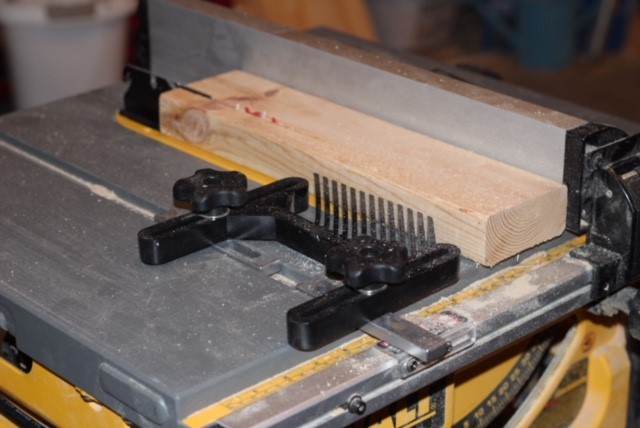
1. Rip a two ten 4 down to be 2 ½ inches on the table saw. If yous desire a thinner shelf, you can rip the frame down more but I wanted a rustic and beefy shelf.
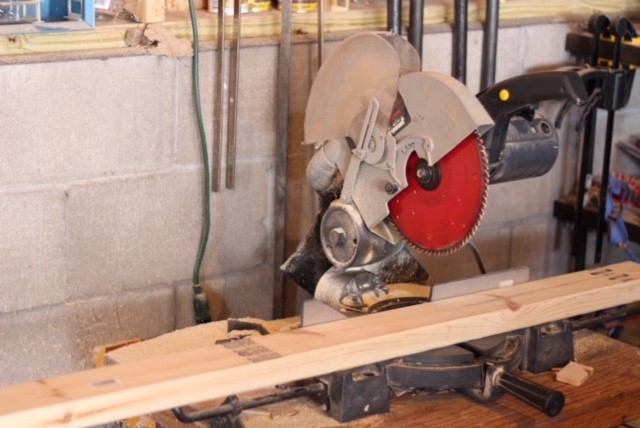
2. Use a miter saw to cut your ledger board. Your ledger board should be approximately ½ shorter than the within length of your shelf so the shelf will easily fit into the shelf support frame. Yous tin can build the frame to fit more snuggly, only it makes information technology more difficult to slide the shelf on and I've plant that it's not necessary to take that tight of a fit.
3. Employ a miter saw to cut the length for each arm of the support. Remember that the 1 10 10 shelf lesser and top are only 9 ¼ inches broad plus you will exist attaching each support arm to a ii x 4 that is really one ½ inches wide. At nearly, you'll want your support arm to exist 7 ¾ inches but I cut mine at 7 ½ inches so I had a little flake of wiggle room (this does non mean your shelf volition wiggle or move after information technology's been hung).

4. Attach the support arms to your ledger lath. I used a pocket hole jig for this but you could easily use deck screws and attach the back up arms by drilling through the back of the ledger lath into the support arms.
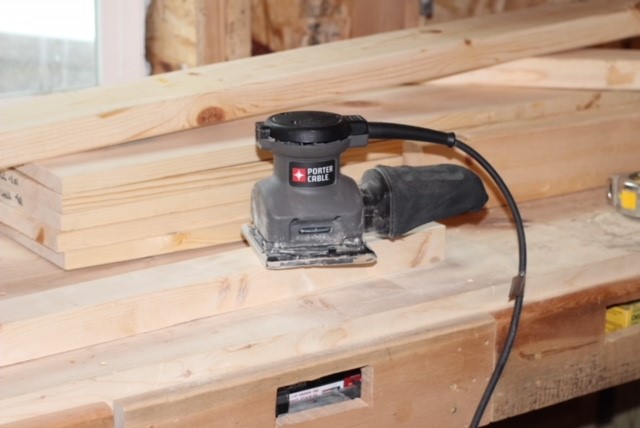
5. After all the back up arms are attached to the ledger board, sand down all the rough edges.
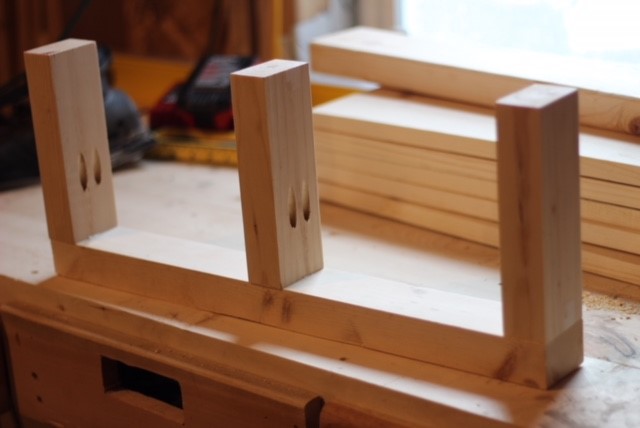
My finished shelf support frame looked like the above moving picture. In that location are several dissimilar variations that yous tin can utilise, depending on the size the strength needed, simply they will all resemble this basic support structure in some style, shape, or course.
Part 2: Build a Simple Box to Employ every bit the Shelf
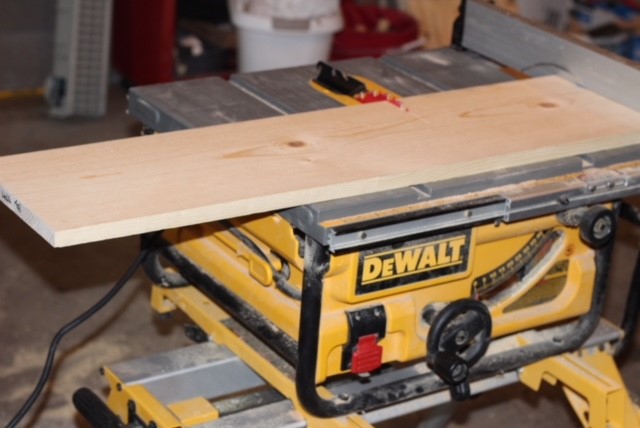
half-dozen. Cut the meridian and bottom of the shelf to the proper length in order to start building a simple box to be placed over the shelf support frame.
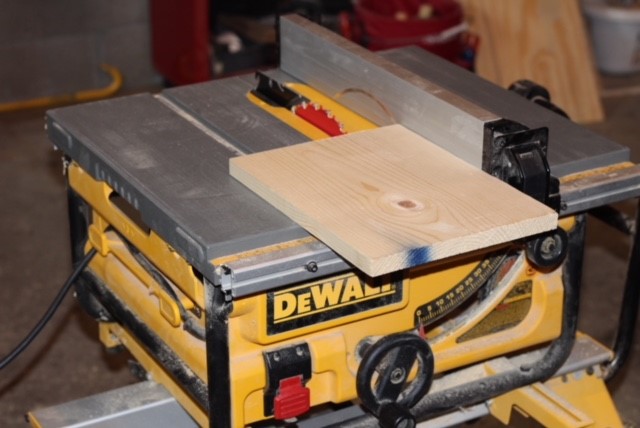
7. Rip the sides and front of the box to size.

8. Attach the front and sides of the shelf to the lesser of the shelf using wood glue and a pocket hole jig. You can also use glue and a pin nailer if you don't take a pocket hole jig or if you're looking to save some time. I like to use the pocket hole jig because it's stronger and hides all smash/spiral holes.

9. Make sure your shelf back up frame fits inside the shelf. Obviously, a dry test run is a good idea so you know if everything fits earlier it's mounted on the wall.
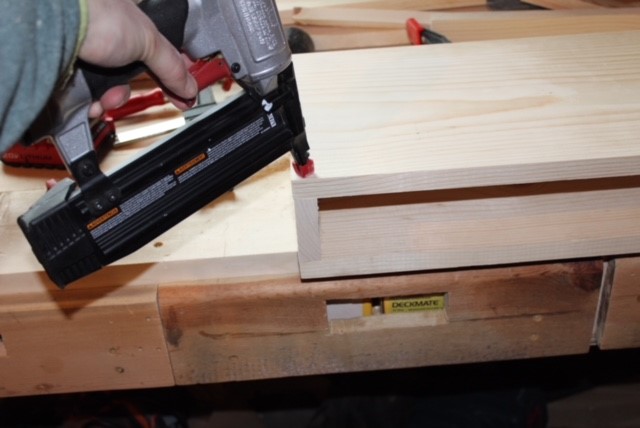
10. Attach the top of the shelf using wood glue and a pin nailer. Since using a pocket pigsty jig isn't an option for the tiptop, using wood glue and pin nailing the summit is the all-time fashion to go.
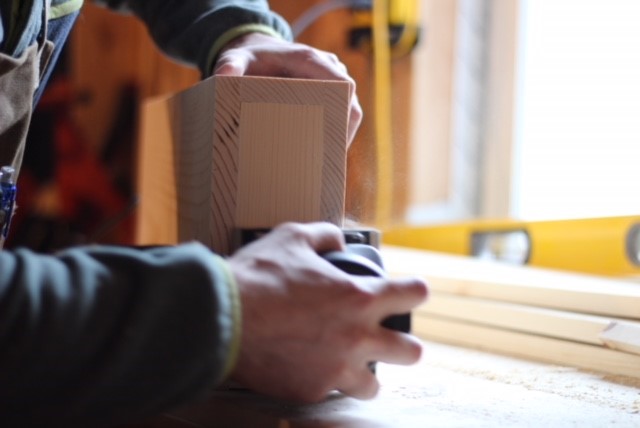
11. Sand the entire shelf with 120 grit until everything is flush and sand it to 220 dust for a smooth surface. You will non be running your hands over these shelves so anything beyond 220 grit is overkill in my stance. Finish by using your air compressor to blow backlog sawdust abroad.
12. Stain the shelf to friction match the décor in the advisable room where your shelf will exist hanging.
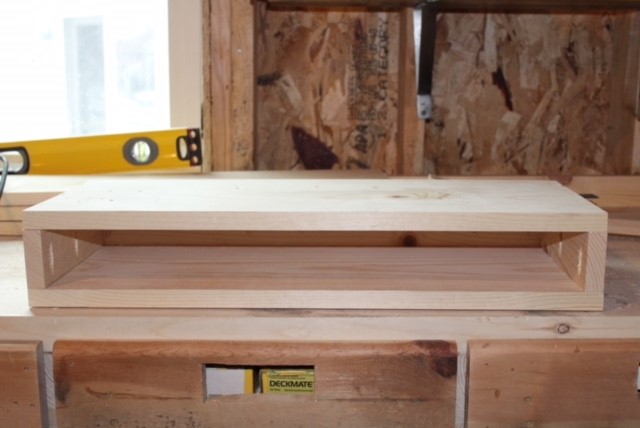
Your shelf should closely resemble the higher up picture. It'due south a uncomplicated box that doesn't require complex joinery so don't overcomplicate it. I didn't stain my shelf even so because I am in the process of redoing our mudroom (more than to come on that after this twelvemonth). I am waiting to see how the other areas of the mudroom end up and so I can stain the floating shelves to fit the infinite. At this indicate, I am planning on using a Minwax nighttime walnut stain, simply that could change as the project evolves. Also, I'1000 a little color blind, so making certain things friction match usually falls into my married woman's department of jobs to do and she has a bully knack for making sure everything in the room ties together.
Part 3: Hang the Floating Shelf
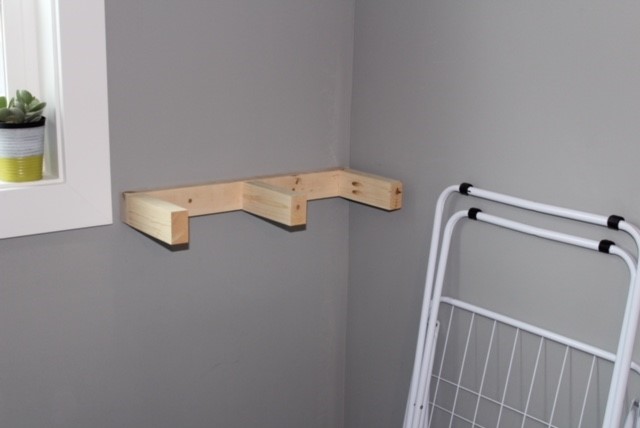
13. Adhere shelf support frame to the wall. I used a rare earth magnet to locate the studs backside the drywall so I knew I was screwing the shelf support frame into a stud (the magnet sticks to the wall when you find a drywall spiral so you know that's where your stud is). If you can't find a stud or it's non located where you want it, you can utilize a drywall anchor to help support the weight of the shelf.

14. Slide on the shelf to the support frame. If needed, you can screw the top of the floating shelves to the back up frame to ensure information technology won't motility.
That's all it takes to make a floating shelf. One time information technology'southward stained the grain and knots from the pino will really pop and stand out. These can work in any room in your business firm or garage and they can add much-needed storage without breaking your banking company. Savour!
DOWNLOAD HERE
How to Make a Floating Shelf With Drawer TUTORIAL
Posted by: jaimiegrous1946.blogspot.com